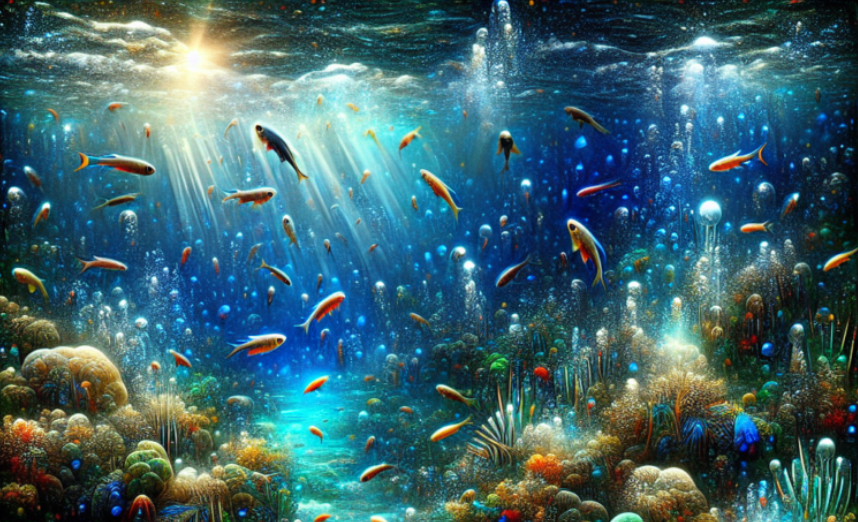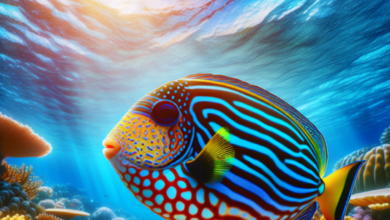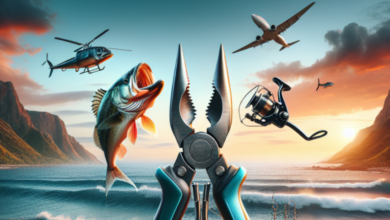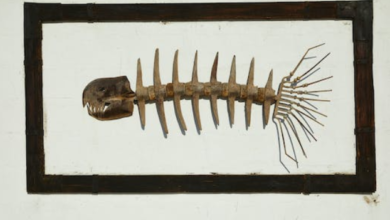Introduction
Saltwater goby fish are fascinating creatures that inhabit the oceans and captivate the attention of marine enthusiasts. In this comprehensive guide, we will dive into the world of saltwater goby fish, exploring their characteristics, behavior, habitat, and more. Whether you’re a beginner or an experienced aquarist, this article will provide you with the knowledge you need to appreciate and care for these beautiful fish.
1. What are Saltwater Goby Fish?
Saltwater goby fish, scientifically known as Gobiidae, are a diverse family of fish species that primarily reside in marine and brackish waters. They belong to the order Perciformes and are known for their small size and vibrant colors. With over 2,000 recognized species, gobies are one of the largest families of fish in the world.
2. Physical Characteristics of Saltwater Goby Fish
Saltwater gobies exhibit a wide range of physical characteristics. While their sizes vary, most species are relatively small, with an average length of 1 to 4 inches. Gobies have elongated bodies, often cylindrical in shape, and are equipped with a pair of fused pelvic fins that form a suction cup-like structure called a “disc.” This unique adaptation allows them to attach themselves to surfaces, such as rocks or corals.
3. Diversity in Coloration and Patterns
One of the most remarkable features of saltwater goby fish is their vibrant coloration and intricate patterns. Gobies display a stunning array of hues, including shades of blue, yellow, orange, red, and green. Some species also exhibit striking patterns such as stripes, spots, or intricate markings, serving as a form of camouflage or communication.
4. Behavior and Social Structure
Saltwater gobies exhibit a fascinating array of behaviors that vary between species. Some gobies are solitary, while others form complex social structures. Many species engage in symbiotic relationships with other marine organisms, such as cleaner gobies that remove parasites from larger fish. Gobies are also known for their intricate courtship rituals, where males attract females through displays of vibrant colors and elaborate dances.
5. Habitat and Distribution
Saltwater gobies inhabit a wide range of habitats, including coral reefs, seagrass beds, sandy bottoms, and rocky shores. They are found in various parts of the world, with the highest concentration of species in the Indo-Pacific region. Gobies have adapted to thrive in different environments, from shallow coastal waters to deep-sea trenches.
6. Feeding Habits and Diet
Gobies are omnivorous fish, meaning they consume a combination of plant matter and small invertebrates. Some species primarily feed on algae and plankton, while others are opportunistic predators, preying on small crustaceans, worms, or even other fish. Their diet often depends on their habitat and availability of food sources.
7. Reproduction and Life Cycle
Saltwater gobies exhibit diverse reproductive strategies. Some species engage in external fertilization, where females release eggs and males release sperm simultaneously. Others, such as the jawfish gobies, are mouthbrooders, with males incubating the eggs in their mouths until they hatch. Gobies generally have relatively short lifespans, ranging from one to five years.
8. Popular Saltwater Goby Fish Species for Aquariums
Many saltwater gobies make excellent additions to marine aquariums, captivating hobbyists with their vibrant colors and intriguing behaviors. Some popular species include the Neon Goby (Elacatinus oceanops), Yellow Watchman Goby (Cryptocentrus cinctus), and Clown Goby (Gobiodon spp.). These fish are relatively hardy and can thrive in well-maintained aquariums.
9. Setting Up the Ideal Aquarium for Saltwater Gobies
Creating a suitable environment for saltwater gobies in an aquarium requires careful planning. Gobies prefer aquariums with ample hiding spots, such as caves, crevices, or live rock formations. A well-established and stable marine ecosystem with appropriate water parameters, including temperature, salinity, and pH, is crucial for the health and well-being of these fish.
10. Maintaining Water Quality and Nutrition
To ensure the long-term health of saltwater gobies, maintaining optimal water quality is essential. Regular water testing, filtration, and appropriate nutrition are crucial aspects of gobies’ care. Providing a varied diet that mimics their natural feeding habits is important, including high-quality pellets, frozen foods, and occasional live or frozen invertebrates.
11. Compatibility with Other Fish and Invertebrates
When selecting tankmates for saltwater gobies, it’s important to consider their compatibility with other marine species. Gobies generally coexist well with peaceful fish species and can even help control common aquarium pests, such as bristle worms or small parasites. However, caution should be exercised when housing gobies with aggressive or territorial fish.
12. Common Health Issues and Disease Prevention
Like any fish species, saltwater gobies are susceptible to certain health issues and diseases. Poor water quality, improper nutrition, and stress can compromise their immune systems, making them more prone to infections. Regular observation, quarantine procedures, and appropriate disease prevention measures, such as proper acclimation and regular water changes, can help maintain their well-being.
13. Conservation Status and Environmental Concerns
Some species of saltwater gobies face conservation challenges due to habitat destruction, pollution, and overfishing. It is important for aquarium hobbyists to prioritize sustainable practices, such as sourcing captive-bred gobies and supporting conservation efforts. Responsible aquarists can also contribute to scientific research and breeding programs aimed at protecting these unique fish.
Conclusion
Saltwater gobies are captivating creatures that add vibrancy and intrigue to marine environments and aquariums alike. From their diverse physical characteristics to their fascinating behaviors, these fish have much to offer enthusiasts. By understanding their needs and providing appropriate care, hobbyists can create thriving ecosystems that showcase the beauty and wonder of saltwater gobies.
FAQ
Q1: Can saltwater gobies be kept in a freshwater aquarium?
No, saltwater gobies are specifically adapted to live in marine or brackish water environments. They require specific salinity levels and water parameters that cannot be replicated in a freshwater aquarium.
Q2: How do gobies defend themselves against predators?
Gobies employ various defense mechanisms to evade predators. Some species rely on their excellent camouflage abilities, blending seamlessly with their surroundings. Others may retreat to hiding spots or employ quick bursts of speed to escape potential threats.
Q3: Are saltwater gobies suitable for beginners in the aquarium hobby?
Yes, some saltwater gobies, such as the Neon Goby and the Yellow Watchman Goby, are considered suitable for beginners. These species are relatively hardy, have straightforward care requirements, and can adapt well to aquarium life.
Q4: Can gobies change their coloration?
Yes, some gobies have the ability to change their coloration. This adaptation allows them to blend in with their surroundings or communicate with other fish. Color changes can occur due to environmental factors, social interactions, or courtship displays.
Q5: What is the average lifespan of saltwater gobies in the wild?
The average lifespan of saltwater gobies in the wild varies depending on the species. In general, gobies have relatively short lifespans, ranging from one to five years. However, with proper care in captivity, some species can live longer.




